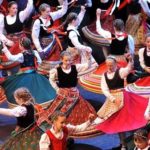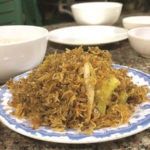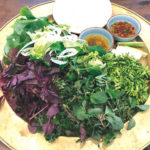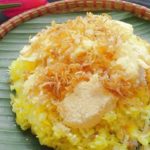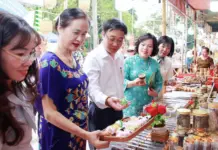The artist behind these captivating paintings, Nguyen Hoang Son, a 29-year-old based in Ho Chi Minh City, revealed to Tuoi Tre (Youth) newspaper that he has long been inspired by the vibrant world of Vietnamese cuisine.
Son’s recent venture into character design, centered around food, provided the perfect opportunity to explore this theme. Each painting, he shared, takes him two to three weeks to complete.
His creative process involves no fancy techniques; instead, he focuses on capturing the essence of each dish. When it comes to choosing colors, he allows his emotions to guide him, resulting in unique and expressive outfits for his fairy-like subjects.
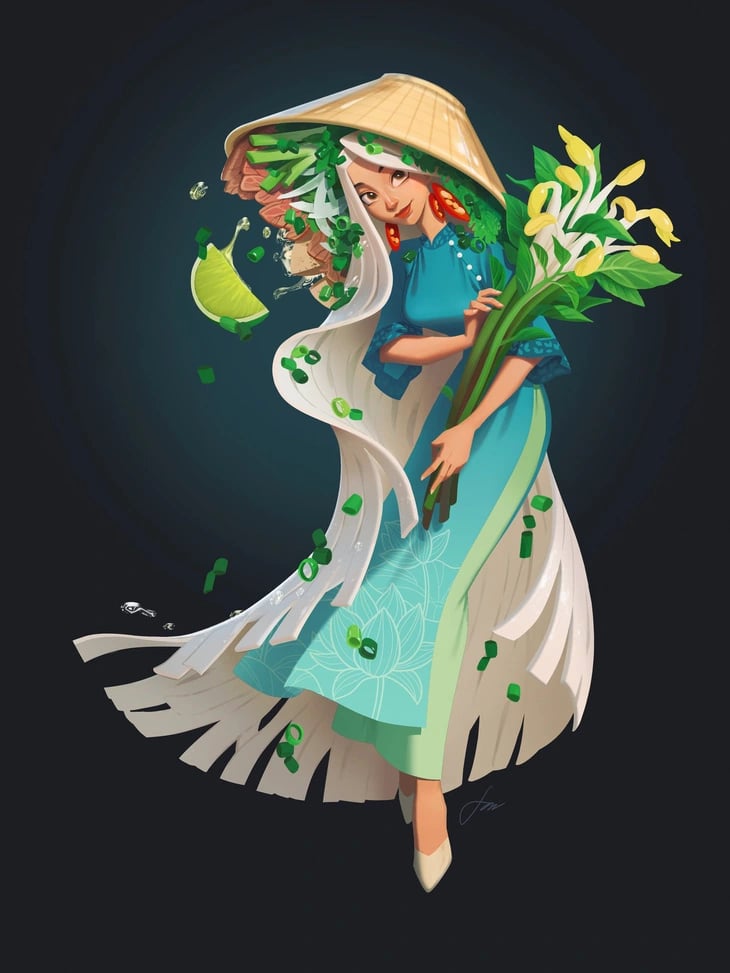 |
| The enchanting ‘Pho’ fairy, a delicate and graceful vision. Photo: Supplied |
The ‘Pho’ fairy, for instance, is brought to life with soft and flowing hues, reflecting the gentle nature of the dish.
In contrast, the ‘Com Tam’ fairy boasts a more intricate design, with careful attention to detail, ensuring viewers can instantly recognize the inspiration behind it.
Son confessed that the ‘Com Tam’ painting presented the most challenges. He wanted to incorporate the traditional attire of southern Vietnam but faced a dilemma as the ao ba ba and non la had already been featured in earlier works and didn’t quite fit the vision for this particular dish.
After much contemplation, he opted for the elegant ao dai and added a unique twist with a man (turban) that resembles a delicious dish.
Describing his process, Son shared that painting rice and leaves came naturally to him. The true challenge, he felt, was in making the dishes look mouthwatering and irresistible to viewers.
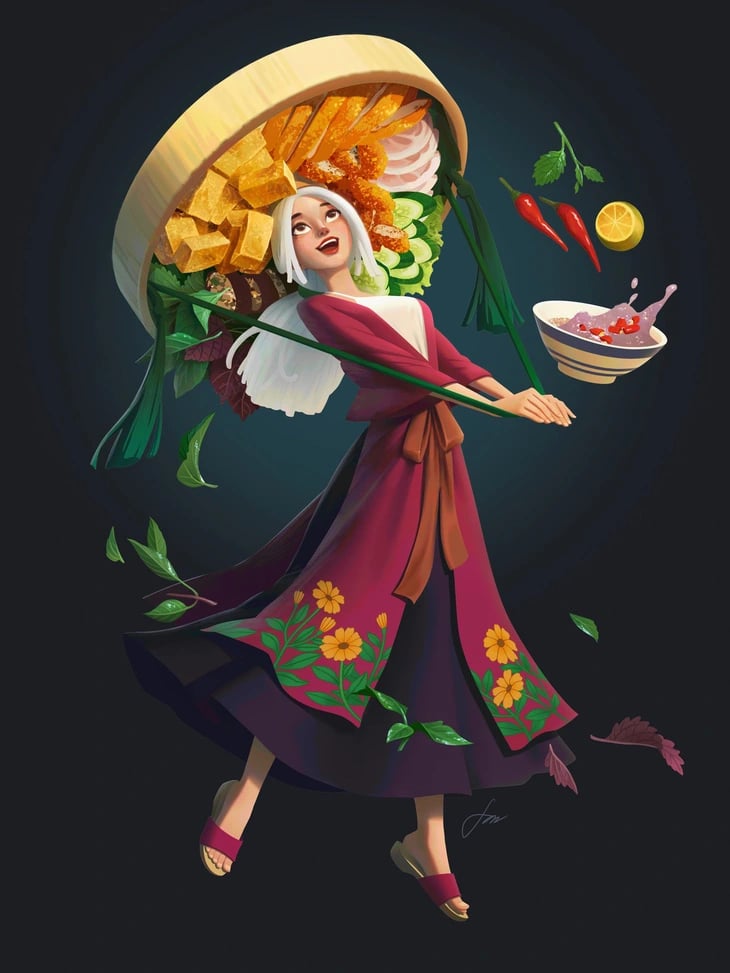 |
| A whimsical take on ‘Bun Dau Mam Tom’, complete with a ‘non quai thao’ hat. Photo: Supplied |
Son’s dedication to his craft is evident in his preparation; before painting the ‘Pho’ fairy, he purchased a bowl of the iconic soup, only to realize later that he had forgotten something and had to buy another one.
Of all his creations, the ‘Pho’ painting holds a special place in his heart, as it came together naturally and effortlessly.
According to Son, the key to bringing dishes to life on canvas lies in evoking a sense of craving in both the artist and, ultimately, the viewer. His formula for success? Staying true to the topic and letting his creativity flow from there.
“When everything falls into place naturally, the result is a comfortable and easily recognizable depiction of the dish and its character,” he explained.
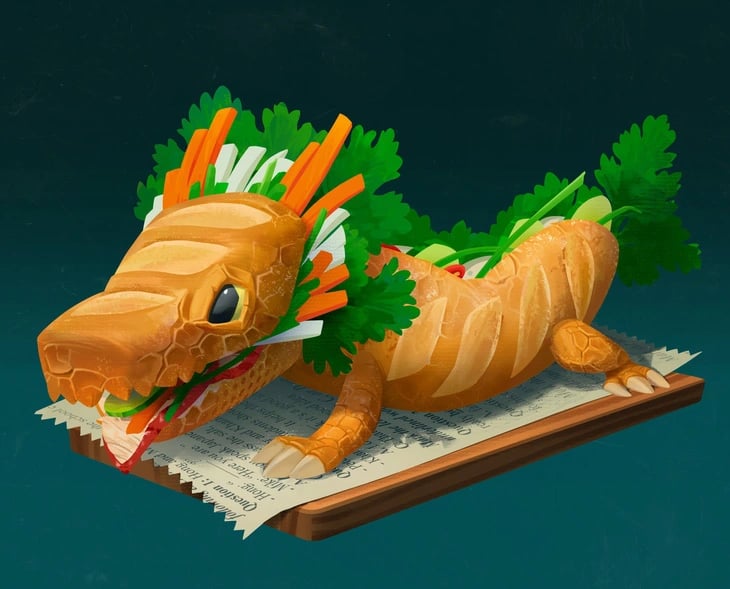 |
| Vietnam’s beloved ‘Banh Mi’ takes center stage in this captivating painting. Photo: Supplied |
Son’s paintings, shared on social media, garnered praise from locals who appreciated the unique fusion of art and cuisine. They also sparked conversations about the regional variations of these dishes, such as the absence of bean sprouts and herbs in Hanoi’s version of Pho and the use of nuoc mam instead of mam tom with bun dau in some areas.
Son’s affinity for Vietnamese cuisine runs deep, and he often finds himself reminiscing about family meals wherever he goes. Looking ahead, he plans to paint Bun Bo Hue, a dish close to his heart.
While he doesn’t aim to cover every Vietnamese dish, he is committed to exploring as many as possible. Additionally, he intends to venture into personifying Vietnam’s architecture and landscapes and even tackling dishes from other countries, promising an exciting and diverse artistic journey.
Rice paddy crab hotpot
Vietnamese cuisine revolves around produce found in the paddy fields. A nation with over a thousand years of wet rice culture, Vietnamese people have been using everything rice-related for centuries.

